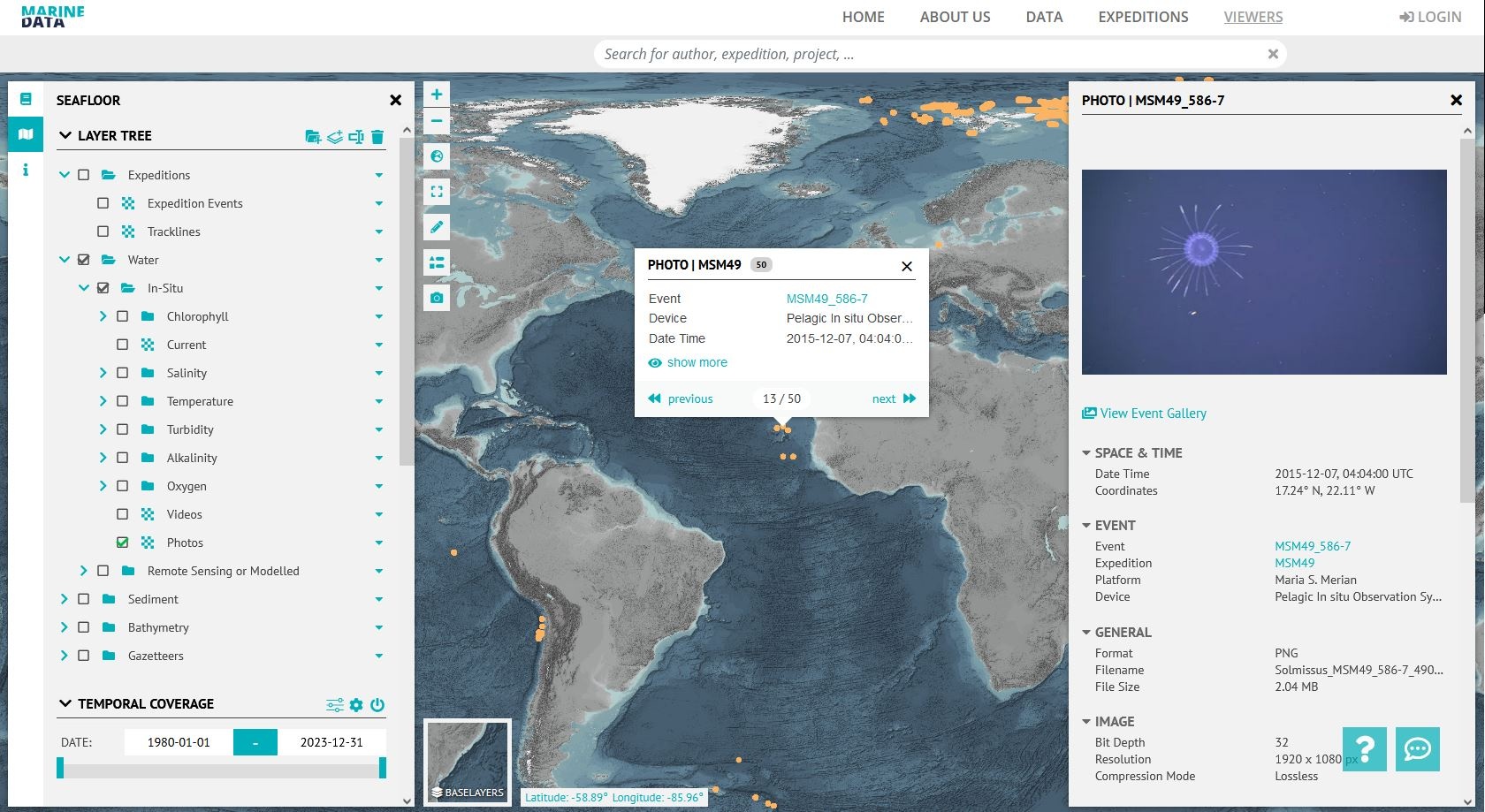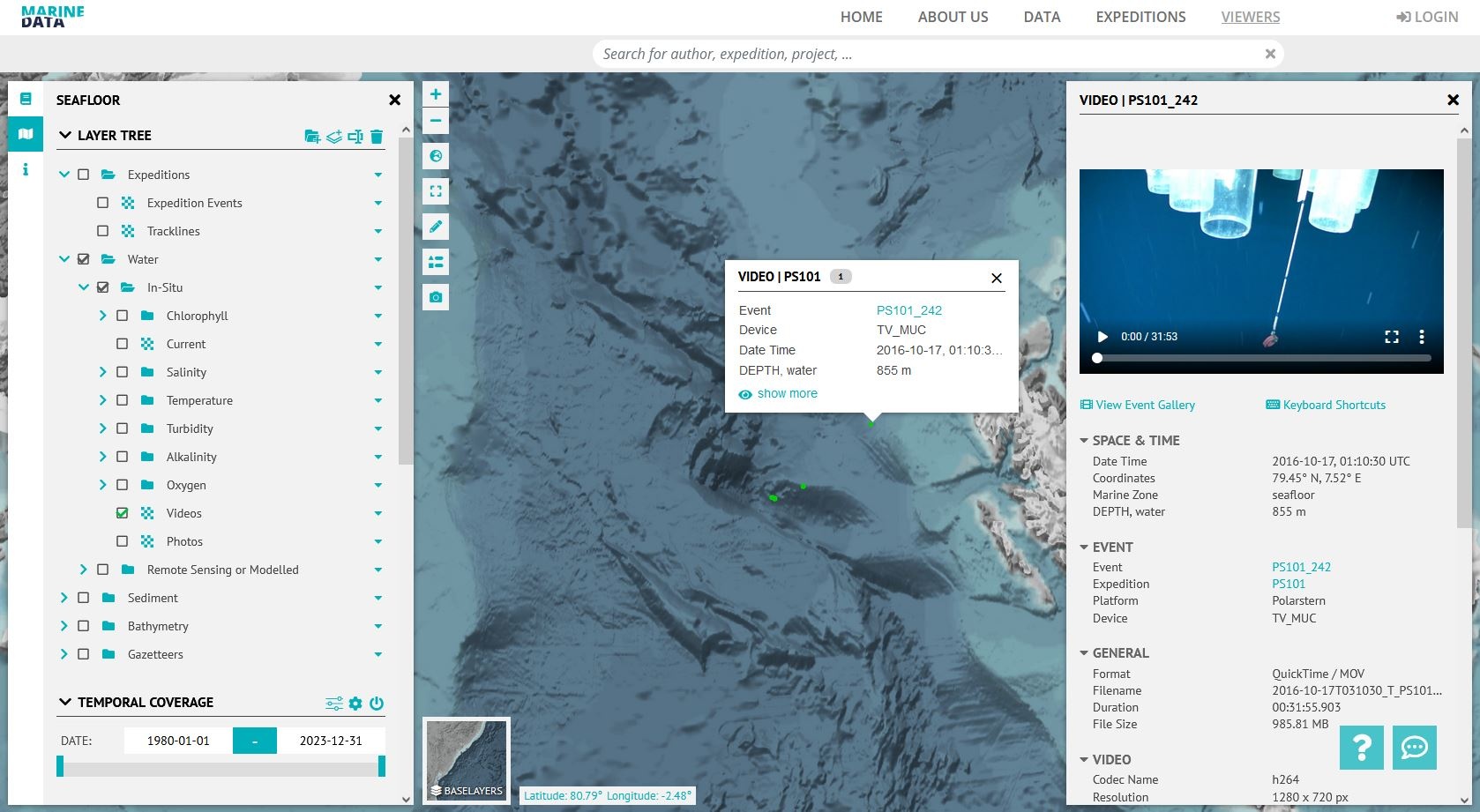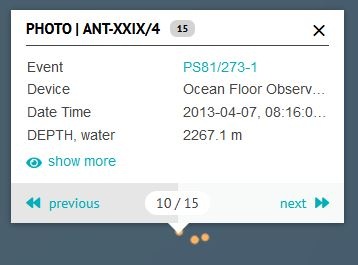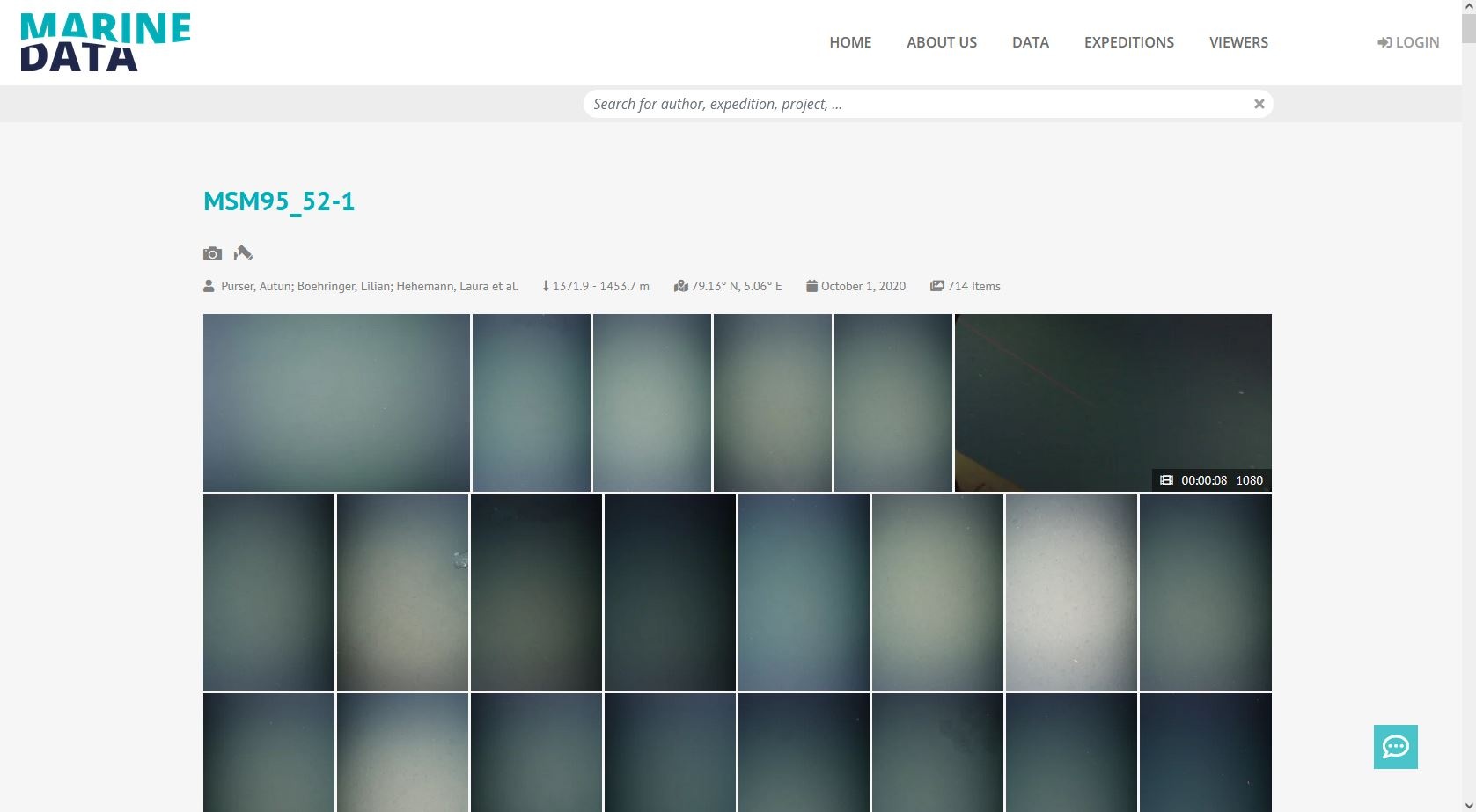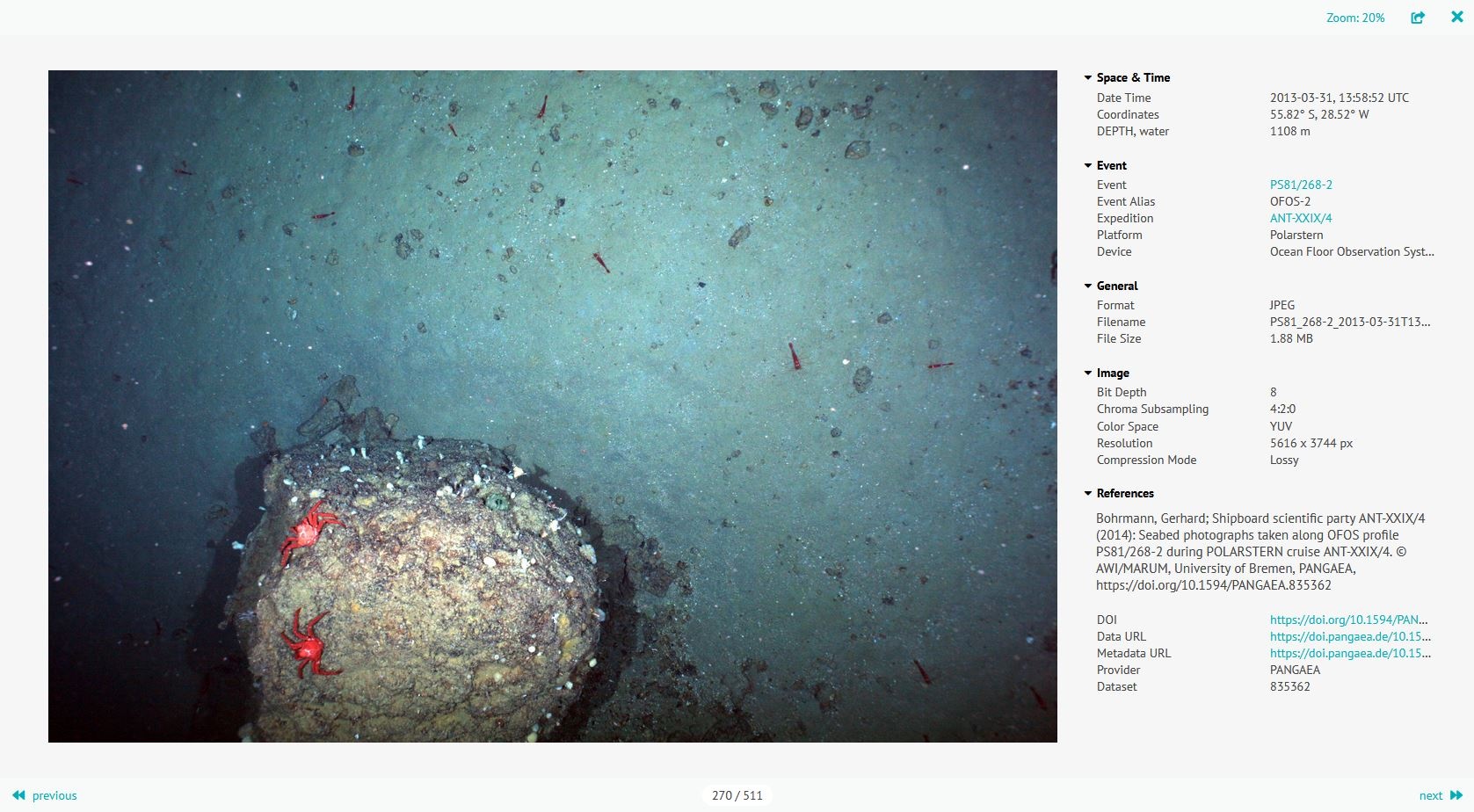BRAINSTORMING
- wo ist was zu finden?
- wie funktioniert das mit mapping: item["properties#harmonized"]["persistent_identifier"]. Falls nicht vorhanden über item["properties#harmonized"]["name"] und falls das nicht als Kompbination aus [item["properties#harmonized"]["date_time"], item.geometry.coordinates.join(separator)]
Geo layer
Main idea
O2A specification for GeoCSV (.sdi.csv)
Exchange point for data ingest
Contact
Layer definitions, styles i.e., abstract etc.
Git repository O2A Spatial Data Products
upcoming O2A Data Product Configuration SOP
Provision of web media
Making videos and photos available on the web typically involves a two-step process. First, they need to be transcoded, and then delivered via a web server. The subsequent sections present an overview of tools and recommendations that can assist you in this process.
Tools: Encoding of media files
When encoding photos and videos for the web, there is a trade-off between visual quality and data reduction. On the one hand, the media should be reduced in file size to achieve the best possible loading speed. On the other hand, the visual quality should not be degraded to the point of introducing unwanted artifacts. There are also technical parameters to consider that have a direct impact on browser performance and compatibility. To get an idea about the most important technical web video parameters, see Recommendation - Video Proxies Parameters.
The following section provides an overview of tools that have been developed to simplify the creation of web media files and are highly recommended.
MARIVP: Primary Python-based tool for generating preview files for the viewer and media gallery. Provides command line interfaces as well as Python modules to generate photos, videos, thumbnails and covers for the web. For detailed documentation, insights into web encoding strategies and more, see its git repository.
Hotfolder-Encoding: Hotfolder-based video file encoding tool that allows custom encoding configuration. A hotfolder is a folder where media files are temporarily stored, automatically processed (i.e. encoded) and returned, all within a defined structure. For more information and code see the git repository.
ELEMENTS Image Broker: Web-API that brokers access to ELEMENTS content based on custom data fields, i.e. image-uuid. Based on the implementation of the IIIF image standard with ELEMENTS as data source. For a detailed description and usage, see the git repository.
Recommendation: Hosting of media files
Media files tend to be data intensive. Computing them on demand, as in the case of the image broker, might be challenge to the infrastructure, especially for high server loads. The following recommendations are intended to reduce load times and contribute to a positive user experience.
Web server: Use state of the art and proven hosting applications, like NGINX or Apache HTTP Server.
HTTP/2: Improves page loading speed, among others, via multiple request over one connection, binary protocol and compression of request headers.
Load balancing: Multiple combined media servers allow higher throughput (especially image broker) and provide fault tolerance.
Image broker cache: When using an image broker, it is highly recommended to enable media file caching. This will speed up the playout of images that have already been sent and are still in the cache. It can also help to reduce the amount of processing required when loading multiple images at the same time, i.e. in a media gallery, thus improving the user experience in the browser.
Viewer
Git repository O2A Spatial Data Products
Git repository Visual Explorer
Show important methods
JSDOC → all .md methods7
displayImage(),
displayVideo(),
roundNumber?
https://marine-data.de/preview/vef/doc/api/global.html#initVideo
Gallery
Git repository O2A Spatial Data Products
based on viewer steps
Example
